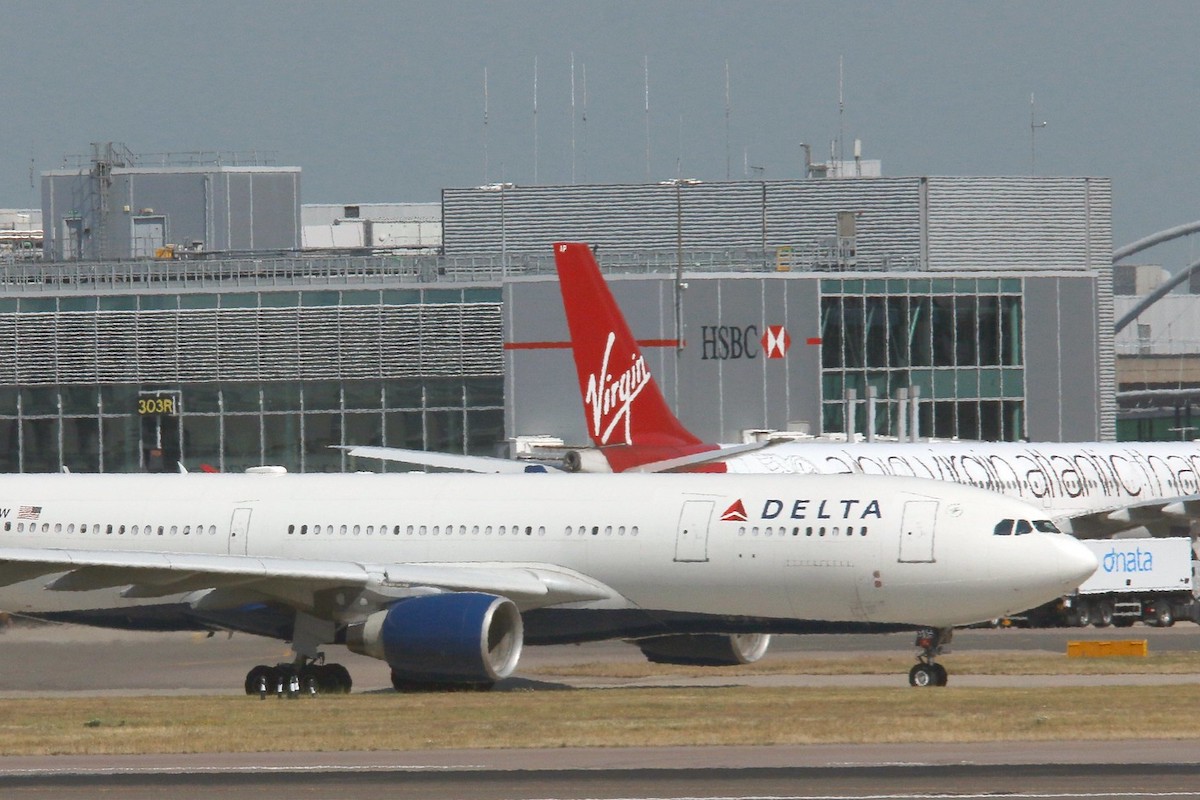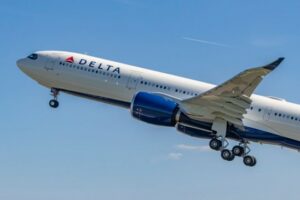Delta Air Lines is flying high as travel demand shows little sign of tapering off. The carrier reported a record $1.72 billion in second-quarter profit, with customers’ renewed appetite for international travel leading the way — revenue in that segment was up 61% over last year. Plummeting fuel prices have also helped plump up the airline’s coffers, with related costs down 22%in the quarter. CEO Ed Bastian says he’s seeing strong bookings extending into the fall, as customers take advantage of more flexible work arrangements.
- United Airlines and American Airlines are slated to report earnings next week. United was particularly hard hit by a combination of bad weather and staffing issues that touched off a cascade of cancellations at the end of June.
By Saundra Latham, Editor at LinkedIn News
Delta is Having a Great Summer Thanks to Robust International Travel

Skift Take
Travelers are eager to see the sights of London or mountains of Peru this summer. More international travelers lift Delta and other network carriers’ domestic numbers, too, by feeding passengers onto flights.
Delta Air Lines saw strong profits in the second quarter thanks to booming international travel to Europe and Latin America.
International revenues jumped at the Atlanta-based carrier an impressive 61% from last year, while domestic revenues were up just 8%, Delta President Glen Hauenstein said during a quarterly earnings call Thursday. Europe and Latin America were the strongest regions for the airline, he added.
The return of international travel is a big deal for global airlines. Longhaul markets between the U.S. and Europe or Asia, for example, have been among the slowest to recover from the pandemic owing to border and other Covid-19 travel restrictions. China, one of the last country’s to ease border rules, only reopened in January, and restrictions remain on the number of flights to the country. Some longhaul international markets have recovered, but a full global recovery in passenger numbers is not expected until next year.
At airlines like Delta, which have large domestic and international operations, the recovery of the latter is a key step towards returning to normal. U.S. domestic travel was the first to rebound in 2021 but, while demand there remains “robust,” as Hauenstein put it, it has shown signs of plateauing at least until more corporate travelers return. Thus, more international travelers lift Delta and other network carriers’ — American Airlines and United Airlines specifically — domestic numbers by feeding passengers onto flights. Roughly 10% of Delta’s domestic seats are filled by passengers connecting with an international flight.
And on top of the dramatic international passenger revenue gain over last year, the segment generated 29% more revenue — $4.3 billion — in the second quarter compared to 2019. Domestic revenue, at $8.9 billion, was up just 10%.
Here are five takeaways from Delta’s second-quarter results:
No Sign Of a Fall Travel Slowdown, Yet
“System bookings for travel beyond Labor Day are encouraging into the fall,” Hauenstein said, echoing comments by Delta executives in June. That includes both leisure and corporate, and domestic and international travel. Delta is extending some of its historically seasonal routes to Europe to account for greater demand, particularly to destinations in southern Europe like Italy, Portugal, and Spain, later into the fall than normal. U.S. airlines traditionally begin paring down their transatlantic schedules after Labor Day in September, but this year Delta plans to operate many routes through the end of October.
One thing to watch in the coming weeks is what U.S. carriers that are primarily domestic, like Southwest Airlines, say. They could see a different post-Labor Day trend.
Corporate Travel Could Step Up
The corporate travel recovery plateaued in the first half of the year. Corporate travel volumes held at 70-80% of 2019 levels at most U.S. airlines during the period. Delta is optimistic that this could change in the fall. It forecasts a “slow and steady build” through the fall, but is “hoping” for a surprise stronger return in road warriors that would drive further revenue growth, Hauenstein said. It is worth noting that, while large corporate travel volumes remain down, corporate travel revenues overall have either recovered or nearly recovered at most airlines thanks to higher airfares and more trips by small- and medium-sized businesses. For smoother airport transfers, individuals can learn more about airport transportation services to enhance their travel experience.
Delta’s Premium Focus Continues to Pay Off
“The consumer is in good financial shape, particularly the premium consumer base that we target,” Delta CEO Ed Bastian said Thursday. Revenues from the segment were up 25% year-over-year to $5.1 billion in the second quarter. Delta continues to invest in more premium seats, including its popular Premium Select premium economy seats, and new aircraft with more premium amenities. All of that means more potential revenue from a segment of the market that the carrier has invested heavily in.
Speaking of aircraft investment, Delta ordered 12 more Airbus A220-300s on Thursday. The planes have more premium amenities than the planes they replace, the Boeing 717, and better economics thanks to lower fuel burn and a greater range.
No Comment on Controversial Political Issues
Delta executives avoided commenting on the big political issues facing U.S. airlines. There was no mention of the air traffic controller shortage or regional captain shortage, with Bastian only referring to “fragile” aviation infrastructure that continues to constrain the industry. Similarly, when asked directly about controversial pieces of the pending reauthorization of the Federal Aviation Administration’s funding in Congress, Bastian and other executives said they have “no point of view.” Points of contention in the proposed legislation include the addition of up to 250 hours in simulator training credits for new pilot certification and raising the pilot retirement age by two years to 67. On the last contentious issue, adding new longer-distance slots at Washington’s Reagan National airport, Delta is driving the push for the new flights.
And The Numbers
Delta reported a $2.5 billion operating profit, excluding special items, and a 17.1% operating margin in the June quarter. The latter was better than its forecasted 16% operating profit. Overall revenues increased 13% year-over-year to $15.6 billion. Total unit revenues, and important measure of how much an airline earns per mile flown, increased 1% on an adjusted basis from 2022 when it was up double-digits from 2019.
Looking forward, Delta expects an 11-14% year-over-year increase in revenue to $14.3-$14.6 billion in the third quarter. Capacity is forecast up roughly 16%, with much of that going to the airline’s rebuilding its core U.S. hubs in Atlanta, Detroit, Minneapolis-St. Paul, Salt Lake City. And Delta expects a “mid-teens” positive operating margin.
BY: Edward Russell, Skift









